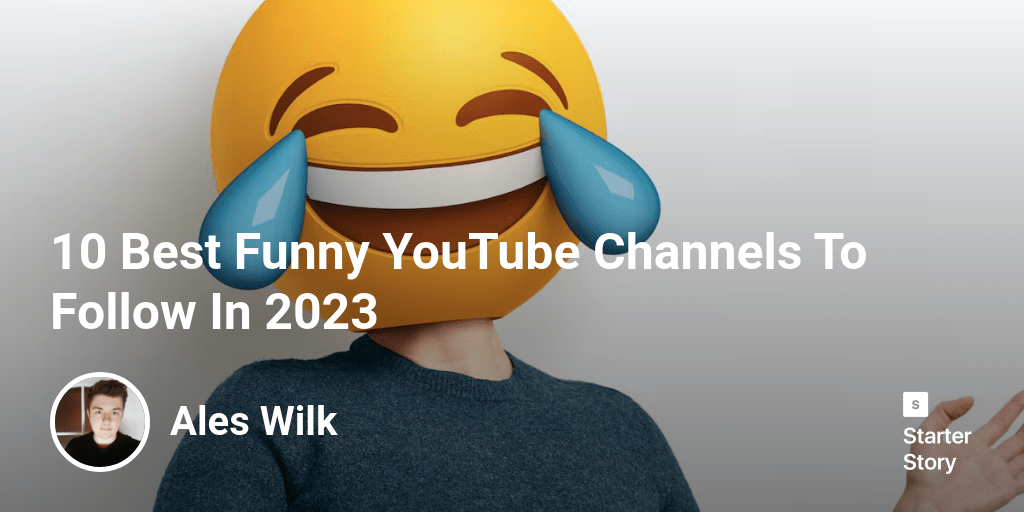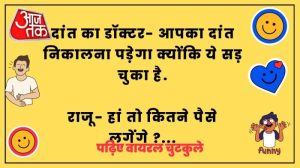
Ever wondered what makes a YouTube channel truly hilarious? It’s more than just silly faces; it’s a potent blend of comedic timing, relatable content, and a dash of that special something that keeps viewers coming back for more. From witty sketch comedy to laugh-out-loud pranks, the world of funny YouTube channels is a diverse and ever-evolving landscape. This exploration dives into the strategies, styles, and secrets behind the most successful channels, revealing the ingredients needed to craft viral comedic gold.
We’ll examine different comedic approaches, from the subtle wit of commentary channels to the explosive energy of pranksters. We’ll uncover the behind-the-scenes magic of content creation, from brainstorming sessions to the final edit, and delve into the art of audience engagement – because even the funniest videos need a loyal fanbase to truly shine. Finally, we’ll explore the business side of laughter, examining monetization strategies and growth tactics that turn viral videos into sustainable careers.
Defining “Funny YouTube Channels”
So, what exactlyis* a funny YouTube channel? It’s more than just a collection of clips with people making silly faces. It’s a carefully crafted blend of comedic style, target audience, and execution that aims to elicit laughter, amusement, or even a chuckle from viewers. The key is consistency and understanding what resonates with a specific demographic.Defining humor is subjective, but successful funny YouTube channels typically share certain characteristics.
These channels understand their niche, whether it’s slapstick comedy aimed at a younger audience, witty observational humor for a more mature crowd, or satirical commentary appealing to a politically engaged viewership. The content needs to be engaging, relatable, and consistently high-quality.
Comedic Styles and Target Audiences
Different comedic styles cater to different audiences. For example, channels featuring pranks often target a younger demographic who appreciate the thrill and unexpectedness of the situations. These channels might use exaggerated reactions and physical comedy. In contrast, channels focused on sketch comedy might employ more sophisticated writing and character development, appealing to a broader audience with a taste for clever wordplay and witty observations.
Channels specializing in reaction videos or commentary often attract viewers who share similar interests and enjoy the presenter’s unique perspective. The success of these channels hinges on the presenter’s personality and ability to connect with their audience. For instance, a channel focusing on gaming might attract a large audience if the presenter is both knowledgeable about the games and entertaining to watch.
Key Elements of Successful Humor Channels
Several elements contribute to the success of a funny YouTube channel. High-quality video and audio production is crucial; poor quality can detract from even the funniest content. Consistent upload schedules keep viewers engaged and returning for more. Clever editing, including the use of music and sound effects, can significantly enhance the comedic impact. Strong branding and channel identity are also essential; viewers need to easily recognize and connect with the channel’s style and personality.
Finally, interaction with the audience through comments and social media helps foster a sense of community and encourages engagement.
Comparison of Different Approaches to Humor
Let’s compare two popular approaches: MrBeast and PewDiePie. MrBeast focuses on large-scale, extravagant stunts and philanthropy, incorporating elements of surprise and genuine emotion alongside the humor. His style is high-energy and visually impressive, appealing to a broad audience. PewDiePie, on the other hand, initially built his success on comedic gaming commentary and reactions, utilizing his quick wit and often self-deprecating humor.
His approach is more conversational and relies heavily on his personality and interaction with the audience. While both are incredibly successful, their approaches to humor are distinctly different, showcasing the diversity within the genre. One relies on spectacle, the other on personality and quick wit. Both, however, maintain high production values and engage their audience effectively.
Types of Funny YouTube Channels

The world of YouTube comedy is a vast and varied landscape, a sprawling comedic kingdom with something for everyone. From slapstick shenanigans to insightful social commentary wrapped in witty satire, the sheer diversity of funny YouTube channels is truly remarkable. Understanding the different types of channels can help you navigate this hilarious digital terrain and find your perfect comedic match.
Let’s delve into the different comedic styles and the channels that master them.
Categorization of Funny YouTube Channels Based on Content and Style
Different comedic styles appeal to different audiences. Some prefer the quick wit of a sarcastic commentator, while others find themselves drawn to the visual gags of a sketch comedy troupe. This table categorizes popular YouTube comedy channel types, outlining their typical content and providing examples of successful channels within each category.
| Channel Type | Typical Content | Examples (Note: Popularity can fluctuate) | Target Demographic |
|---|---|---|---|
| Sketch Comedy | Short comedic skits, often with recurring characters and storylines, exploring various themes and situations. | Good Mythical Morning, CollegeHumor, Smosh | Broad appeal, particularly younger audiences (teens and young adults) |
| Prank Videos | Videos documenting pranks played on unsuspecting individuals or in public spaces. Often involves elaborate setups and reactions. | MrBeast (though he’s expanded beyond just pranks), VitalyzdTv (caution: content can be controversial), Roman Atwood | Younger audiences, those who enjoy thrilling or surprising content. Note: Ethical considerations are paramount in prank videos. |
| Animation | Comedic stories, characters, and scenarios presented through animation. Styles range from simple 2D to complex 3D. | TheOdd1sOut, Jaiden Animations, Domics | Broad appeal, particularly younger audiences, fans of animation. |
| Commentary/Review | Videos offering humorous commentary on current events, pop culture, video games, or other topics. Often employs satire and witty observations. | Markiplier (gaming commentary with comedic elements), Philip DeFranco (news commentary with a humorous edge), PewDiePie (gaming commentary, known for his comedic style) | Fans of the specific topic being covered; generally attracts a younger to middle-aged audience. |
| Let’s Plays/Gaming Channels (with comedic elements) | Videos showcasing gameplay, often infused with comedic commentary, reactions, and humorous interactions. | Jacksepticeye, DanTDM, Pokimane (streams, but comedic moments are prevalent) | Gamers and fans of the games being played; broad age range. |
Comedic Styles and Their Appeal
The success of a funny YouTube channel hinges significantly on its comedic style and how well it resonates with its target audience. A channel relying heavily on slapstick might appeal to a younger demographic, while a channel using sophisticated satire might attract a more mature audience. Understanding these nuances is crucial for both creators and viewers. The comedic styles employed often dictate the channel’s overall tone and the type of humor it delivers.
For example, a channel using dark humor will likely have a different target audience than one employing wholesome family-friendly humor.
Content Creation Strategies for Funny YouTube Channels
Crafting consistently hilarious YouTube content requires more than just a knack for humor; it’s a strategic process blending creativity, planning, and technical skill. This involves understanding your audience, developing a unique comedic style, and mastering the technical aspects of video production. Success hinges on creating videos that resonate with viewers, leading to increased engagement and a loyal subscriber base.
Developing engaging and humorous video content is a multi-stage journey, starting with the spark of an idea and culminating in a polished, shareable video. This process demands creativity, planning, and a good understanding of your target audience’s sense of humor. Let’s break down the key steps involved.
Brainstorming and Idea Generation
Effective brainstorming is crucial. Start by identifying your niche within the comedy landscape. Are you aiming for slapstick, observational humor, satire, or something else entirely? Consider your strengths and what you find genuinely funny. Then, brainstorm ideas based on current trends, pop culture references, personal experiences, or even everyday observations.
Keep a running list of potential video concepts, refining them as you go. Don’t be afraid to experiment and try out different comedic approaches. For example, a channel focusing on relatable awkward situations might brainstorm ideas around common social anxieties, while a channel dedicated to parody might focus on popular movies or TV shows.
Scripting and Storyboarding
Once you have a strong concept, it’s time to craft a script. While some YouTubers thrive on improvisation, a well-written script ensures a clear narrative and maximizes comedic impact. This doesn’t mean every joke needs to be meticulously planned; leave room for spontaneity and natural reactions. A storyboard, a visual representation of each scene, can help visualize the flow and pacing of your video.
Consider using different camera angles and editing techniques to enhance the humor. For instance, a simple sketch comedy might have a storyboard showing a character’s progression through a series of increasingly absurd situations.
Filming and Production
High-quality filming is essential, even for comedic content. Good lighting, clear audio, and stable camera work significantly enhance the viewing experience. Consider investing in basic filming equipment, such as a decent microphone and lighting setup. If you’re working with other people, clear communication and collaboration are vital to a smooth production process. Remember to shoot multiple takes to ensure you capture the best possible performance.
A well-lit and clearly audible video, even with a simple setup, will always look more professional than a poorly filmed one, regardless of comedic content.
Editing and Post-Production
Editing is where your video truly comes to life. Use editing software to cut out unnecessary footage, add transitions, incorporate music and sound effects, and generally refine the comedic timing. Pay close attention to the pacing; too slow, and viewers might lose interest; too fast, and the jokes might be missed. The editing process is where you can really fine-tune the humor and ensure a smooth, engaging viewing experience.
Think of editing as the final polish that elevates a good video into a great one. Consider using techniques like jump cuts, slow motion, or fast-forward to create specific comedic effects.
Examples of Successful Content Creation Strategies
Many successful funny YouTube channels utilize distinct strategies. MrBeast, while not solely comedic, masterfully incorporates humor into his large-scale stunts and charitable endeavors. His strategy involves high production value, relatable characters, and a focus on surprising and heartwarming moments alongside the humor. Conversely, channels like PewDiePie built their audience through raw, unscripted commentary and gaming content, leveraging their unique personalities and interactions to generate humor.
Their success highlights the importance of authenticity and connecting with your audience on a personal level. These examples demonstrate the diverse approaches to successful comedy content creation.
Final Review

So, there you have it – a whirlwind tour of the vibrant world of funny YouTube channels! From understanding the core elements of successful humor to mastering audience engagement and monetization strategies, we’ve covered the essential ingredients for creating and growing a thriving comedic empire on YouTube. Remember, the key is to find your unique comedic voice, connect with your audience, and never stop creating content that makes people laugh.
The internet is waiting for your next viral hit!
Essential Questionnaire
What are some common pitfalls to avoid when creating funny YouTube content?
Overused jokes, poor audio/video quality, ignoring audience feedback, and a lack of consistency are common pitfalls. Authenticity is key – force-fed humor rarely works.
How important is editing in creating a funny YouTube video?
Editing is crucial! It can elevate even mediocre footage with clever cuts, sound effects, and music choices. Think of it as the secret sauce that makes the humor pop.
How can I promote my funny YouTube channel effectively?
Utilize social media, collaborate with other creators, engage with your audience, and consider paid advertising. Consistency and quality content are paramount.
What are some examples of funny YouTube channels with different comedic styles?
Examples include sketch comedy (e.g., CollegeHumor), prank channels (e.g., MrBeast), animation (e.g., Vsauce), and commentary channels (e.g., The Try Guys). Each has a unique comedic style and target audience.






